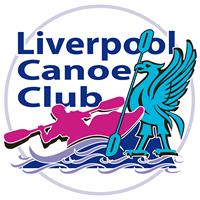When first trying to edge or roll my sea kayak, I thought it may be helpful if my lower knee had something to push against. I soon knocked up a pair of foam supports and glued them in place using water-based Evo-stick which lasted all of five minutes at King sway. I later refitted the same prototype blocks using River Bond and they’ve never budged since.
sway. I later refitted the same prototype blocks using River Bond and they’ve never budged since.
Foam blocks below the knee/thigh also provide general support while paddling. Maybe I’m just lazy, but I now feel uneasy in any boat without them. Having recently purchased a new sea kayak, fitting thigh supports was a must.
Closed-cell foam is available from AS Watersports at £10 per block. http://www.aswatersports.co.uk/shop/product_info.php?products_id=752 With care, a single 32cm square block would probably suffice, but having a second one will allow for cutting errors. River Bond adhesive is available from Endless River at £16 per 250ml tin.
http://www.endlessriver.co.uk/river-bond-250ml-p-774.html
The above closed-cell blocks are 3” thick which may not be deep enough for some situations. For my plastic Easky, I fitted single foam pieces on an angle to bridge the curve of the hull and thereby gain more height. An alternative approach, which I now prefer, is to construct each side in two sections: a simple lower section which fits to the base of the hull, and a more intricately shaped upper section which rests on the lower one and can be easily removed and replaced during the fitting process.
Pieces of insulating tape on the base of the cockpit area will allow each lower section to be quickly relocated. The corresponding upper piece can then be slid into place along the lower one. The first stage is to determine the precise location of each section of foam and to fashion their outer faces to match the shape o f the boat’s hull. Having done this, the inner face of each block can be gradually trimmed away to suit one’s preference.
f the boat’s hull. Having done this, the inner face of each block can be gradually trimmed away to suit one’s preference.
A small tenon saw or similar is ideal for fashioning the foam. A sanding block with ultra-coarse paper will smooth the surface at each stage in a matter of seconds. If it all goes wrong, i.e. too much material has been removed, only the upper section will probably need to be replaced. I’ve found that it’s always worth having another go – preferably after a br eak – and the second attempt is generally better than the first.
eak – and the second attempt is generally better than the first.
To allow water to flow along the boat’s length, a small fore-to-aft channel under each block is probably a good idea. A second cutaway may be needed to clear the skeg cable.

When glueing the two sections together, their alignment is critical otherwise the combined block may no longer fit snugly against the boat’s sides. Once both blocks are complete, their contact areas can be determined by drawing around them onto the hull with a marker pen. Having roughened these areas, the blocks can then be carefully glued into position. By following the 2-stage instructions on the tin, River Bond has never failed me yet.

I now regard thigh supports as an essential extra for any kayak. For the time that it takes to fit them, I reckon they’re well worth the effort.
Robin Emley
